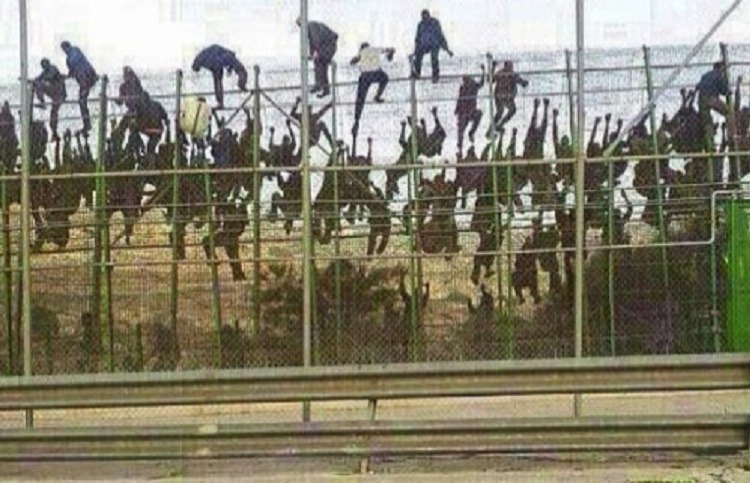The Diplomat
The flow of migrants to the Canary Islands from Morocco continues to channel three times as many irregular arrivals as can be attributed to the ‘Algerian route’ despite Spain’s turnaround in supporting the Alawite plan for Western Sahara, which resulted in mid-March in the closure of the crisis with the Kingdom of Mohamed VI and, in parallel, the angry protest from Algiers that led this week to the suspension of the friendship treaty, reports Europa Press.
According to data from the Ministry of the Interior, up to 31 May -compared to the same period in 2021- migration attributable to the ‘Moroccan route’ to the Canary Islands has increased by 50% to 8,268 arrivals (in 181 small boats). This is triple that of the ‘Algerian route’, to the Balearic Islands and other points on the Spanish mainland, which has fallen by 35 per cent to 2,824 arrivals (in 274 boats) in the first five months of 2022.
Since March, when Moncloa backed Morocco’s plan for the Sahara by letter, ushering in a ‘new stage’ in bilateral relations -with Algeria’s consequent anger at the announcement this week that it was breaking off trade relation – arrivals to the Canary Islands have increased month by month: 431 in March, 697 in April and 1,644 in May.
These figures are still a far cry from those counted by sea to the Balearic Islands and mainland Spain – mostly attributable to the ‘Algerian route’ – with 29 arrivals in March, 551 in April and 609 in May.
Police sources consulted by Europa Press have acknowledged that they do not rule out an upturn in arrivals of small boats from Algeria, although without reaching figures comparable to the crisis experienced with Rabat, with two crucial moments: the summer-autumn of 2020, at the height of the Covid pandemic, when 2,700 migrants were housed in the Arguineguín and Barranco Seco (Gran Canaria) dock, and in May 2021, with the entry into Ceuta of some 10,000 people in the face of the passivity of the Moroccan police.
Forecasts on migratory flows are drawn up with great caution due to several factors, but the main one – as the Interior Ministry stresses – is the emergency situation in many African countries, exacerbated by the instability of local governments, the Covid pandemic and the consequences of the war in Ukraine on the supply of food and other basic necessities.
“Neither Morocco nor Algeria nor anyone else has a button to trigger or completely stop the flow of small boats”, say the aforementioned sources, who also mention the differences in orography and other data, such as the fact that the average cost of embarking on a small boat is 2,000 euros on the Moroccan route, which is half that of Algeria and that, therefore, less migrants from sub-Saharan countries are channelled from Algeria.
According to police data, in 2021, 40 per cent of illegal migration reached Spanish shores from Morocco, 30 per cent came from Algeria and the remaining 30 per cent was attributed to sub-Saharan countries. Interior also routinely points out that, thanks to cooperation with countries of origin and transit, 40% of departures are cut off.
In total figures, the first five months of 2022 show a 15.8 per cent increase in irregular arrivals (12,531) to Spain. Interior Ministry sources point out that the rate of arrivals slows down in each fortnightly update, from an increase of 29% in the first fortnight of April to 15.8% in the second fortnight of May.
In the specific arrivals to the Canary Islands, the aforementioned Ministry of the Interior sources point out that, with data from 2022, the peak of 134% in the second half of February has gone from a 50% increase at the end of May.






